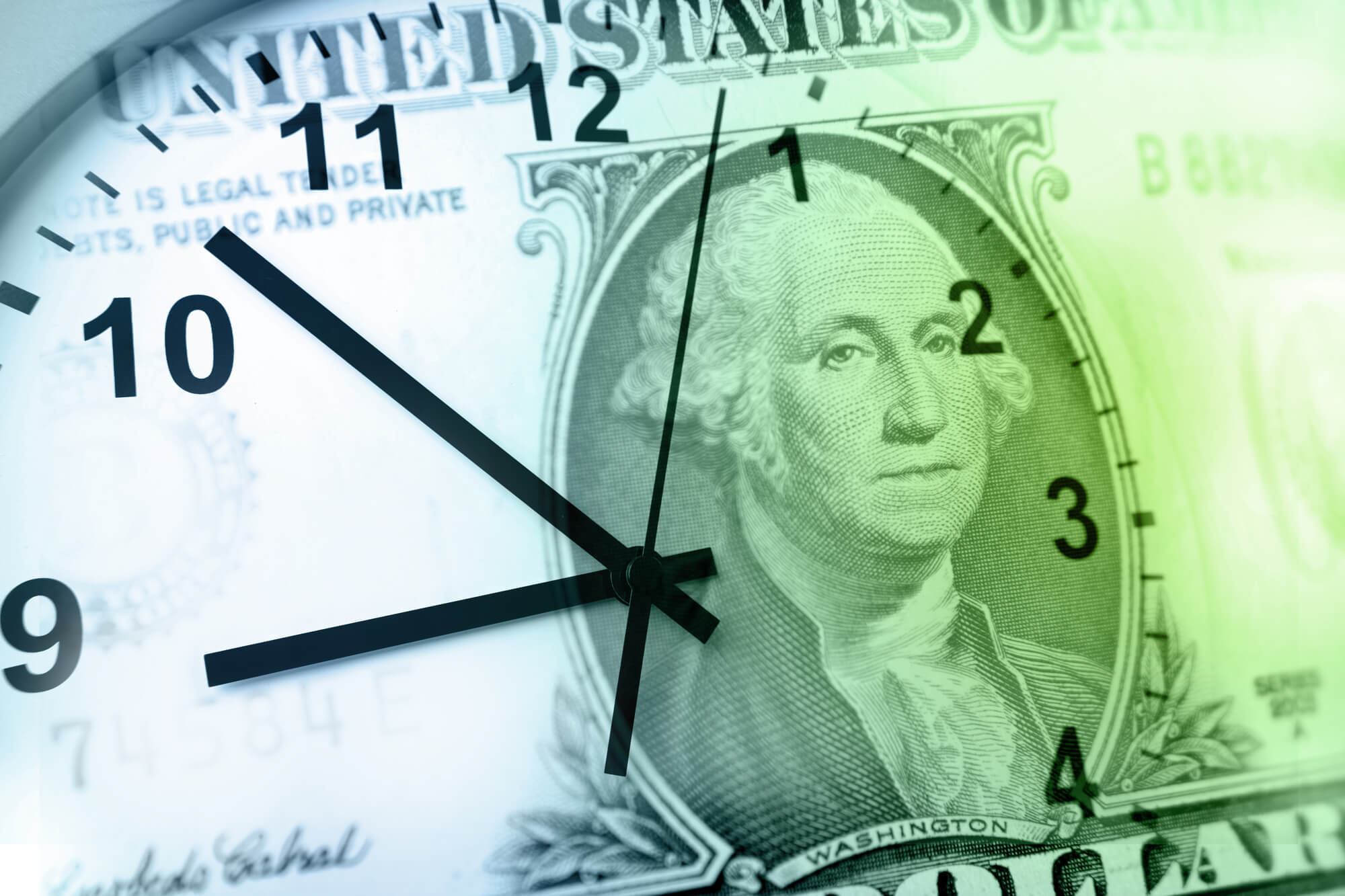Our brains are incredible organs that allow us to experience everything about life. Our brains temper our wants and needs: they can tell us when we are full, no longer thirsty, or satisfied in some other way. However, sometimes the complexity of being a human and our circumstances can interfere with our ability to understand when we don’t need to spend anymore money. Many psychological and emotional reasons exist that make it hard for us to control or halt spending, even when we should.
It’s hard to not spend or to stop spending money because of mental accounting fallacies, failure to delay gratification, indulgences in retail therapy, sunk cost fallacies, social peer pressure, general overspending, and even actual shopping addictions.
By learning to understand the reasons why it’s challenging to not spend money, you can equip yourself with the right tools to combat them.
Psychological and Emotional Reasons It’s Hard to Avoid Spending
When we spend more money than planned, it’s often because of a perceived need – whether that’s the need for the actual item, a need to be seen a certain way, a need to care for an unbalanced aspect of your life, or a need to enjoy gratification now. Those needs can manifest themselves as mental fallacies, all of which can lead to spending money when unnecessary.
Succumbing to Monetary Mental Accounting Fallacies
One of the reasons it’s hard not to spend money is having a mental accounting fallacy. A fallacy is a mistaken belief, and a mental accounting fallacy is mentally grouping items (in the case of money, budget categories or income sources) and then making decisions (sometimes erroneous) about those items based on their grouping.
The first type of mental accounting fallacy you might encounter, a budgeting mental fallacy, could include something such as budgeting $50 a week for eating out. Because that money was pre-designated for eating out, you might find yourself spending all $50 each week eating out, even when you don’t need to or even necessarily want to (you might find more happiness in eating a home cooked meal). But because you budgeted it for that purpose, you spend it! It’s important to regularly evaluate your budget to understand what spending is adding value and joy to your life, and what spending can be rearranged. Understand that money is all the same, and a simple mental categorization doesn’t change whether or not you should spend it, or even how to spend it.
The second type of monetary mental fallacy you might experience is an income source mental fallacy. Examples of this include birthday or congratulatory money, work bonuses, or tax refunds. Because this type of income came from an unplanned or variable source, it can often be treated with indifference or nonchalance. But if you receive $500, it doesn’t matter where that money came from – it’s still $500. You don’t need to spend it all on new clothes or video games because it was given as a gift; you can invest it the same way you might invest $500 from your paycheck. All money should be treated with the same amount of caution and prudence.
Failing to Delaying Gratification Now for a Greater Reward Later
Choosing something now in lieu of something better later is failing to delay gratification, a further reason why it’s hard to not spend money. A famous experiment known as the Stanford marshmallow experiment was done in the 1970s by psychologists studying delayed gratification in children. Children were given a single marshmallow and told that if they didn’t eat it for a period of time, they would receive an additional marshmallow. The children were then left alone to decide whether they would consume the marshmallow now and give up the prospect of another or sit tight until they could have two. Follow-ups to the study found the children who choose to delay gratification and wait for the second marshmallow had better life outcomes, such as higher test scores, healthier bodies, and greater educational successes.
This principle applies to money. If you’re incredibly hungry, it can be easy to quickly pick up a bite to eat, even though you have plenty of food waiting for you at home. If you’re worried that you might seem outdated, you might purchase the latest iPhone right when it comes out, even though you are actually trying to save for an upcoming vacation. Because you don’t have food with you now, and you’re not experiencing your vacation now, it takes willpower to choose not to buy unneeded items and delay your gratification. To avoid this, practice the 24-hour or 30-day rule. These rules suggest delaying buying an item for a certain period of time after determining you want something. If you’re shopping online and find something you want, close the tab and wait a whole day. If it’s expensive enough, wait 30 days. Use the time to determine if the item is actually going to improve the quality of your life, or if it’s unnecessary and there’s something you want more instead.
Using Retail Therapy as a Band-aid
It can be hard to not spend money when you’re using retail therapy to “fix” or avoid something else in your life. Retail therapy is shopping without intention, motivated by increasing your mood or sense of comfort (not literal comfort, as in a cozy blanket). Examples of this would include having a difficult, stressful conversation at work, and then immediately going to Amazon or an actual store to buy something to make yourself feel better. According to researchers at Youngstown State University, this is more likely to affect women than men, with 64 percent of women compared to 40 percent of men stating they had participated in retail therapy.
The temporary “happiness” in retail therapy is only found because your attention is diverted from or you are numbed to an actual issue in your life. If you find yourself feeling sad or unhappy about something in your life, such as a relationship or job, don’t turn to shopping. Instead, find ways to healthily deal with your anxiety, such as through meditation, speaking with a therapist, engaging in enjoyable hobbies, exercising, and serving others. If you experience clinical anxiety or depression or any other illness, consult a competent medical professional. There is hope for you to be happier and healthier, without retail therapy.
Sinking Money Due to Sunk Cost Fallacies
Similar to mental accounting fallacies, sunk cost fallacies make it difficult to avoid spending money. A sunk-cost fallacy is the idea that continued time, money, or effort should continue to be invested in something just because something has been invested in it in the past, regardless of whether or not the benefits outweigh the cons. This can manifest itself financially in various ways, including purchasing a pair of running shoes at the mall because you spent the whole day there searching for a pair (even if you don’t love what you’re buying or they were out of your price range).
To combat the sunk-cost fallacy, take a moment to think about the future. What will actually bring you more happiness: will being done with the shoe search or having the perfect pair of shoes bring you more value? Focus on delaying gratification now, described above, to avoid making impulse decisions purely based on sunk costs. Acknowledge the facts (i.e. how long you spent at the mall, and how many pairs of shoes you tried on) but view them as learning experiences rather than a waste of time. You now have 15 pairs of shoes you can cross off your list of potential candidates!
Giving in to Social Peer Pressure
Many social activities involves some kind of purchase, such as an evening at the movies, dinner out, or weekend trip. But sometimes the amount you will spend for each activity is variable instead of fixed (the movie ticket will have a fixed price, but the cost of dinner is dependent on what you order). When everyone is spending more money around you, it can be challenging to go against the grain and spend less. In the restaurant scenario, if your friend purchases a 5 course meal and you were only going to opt for a salad and entree, you might feel pressured to order more food, even if you aren’t hungry.
Social peer pressure can more easily be resisted when you are prepared. If you’re eating out, look up the restaurant online and peruse the menu. Determine how much you can spend that evening, and then make a game plan of what you might order within your budget, and stick to it when you get there. In more spontaneous circumstances, such as buying a souvenir, again employ the 24-hour rule (or at the very least 1-hour rule). Put down what you want and come back later to ensure it will be worth the money to you. To avoid financial social peer pressure in general, suggest free events such as a picnic in the park, hike, or game night.
Losing Money to General Overspending
In addition to all of the reasons listed above, it can be hard to stop spending money simply because you are overspending unnecessarily. General overspending can be caused by neglected opportunity costs, self-rewards, credit card spending, impulse buying, and the anchoring principle, among other triggers.
Opportunity cost is valuing something by what you could buy if you didn’t buy that item (such as 50 candy bars for $1 each instead of a $50 shirt). If you don’t take the time to think through the real cost of something, you’ll find yourself spending more than necessary and without satisfactory results. Instead, prioritize your purchases. Determine what you want most, and then evaluate the tradeoffs for the other, less-wanted items on your list. Maybe you could have items 2-5 on your top five most wanted list for the same price of item 1. Which is more important to you?
Another cause of overspending is monetarily self-rewarding. All things should be done with moderation, and that includes rewarding yourself with purchases. But if you find yourself constantly buying something after a work success or high grade, find new methods to enjoy your victories. Reward yourself with at-home self-care, participating in a favorite hobby, or taking a day off of work or school.
Using a credit card to make all of your purchases removes yourself from and delays the actual cost, sometimes leading to overspending. You can put a $500 chair on a credit card one day and not actually need to pay the bill until a month later, and therefore spend more and more as the month continues on. The antidote to this is fairly simple: start buying everything with cash or a debit card. At the beginning of the month, withdraw or transfer to the account connected to your debit card the exact amount of money you budgeted for any given category. Then, spend only up to that limit.
Impulse buying, or buying something because of circumstantial pressure or needs, can induce overspending. It’s been stated multiple times in this article, but impulse buying can be avoided by practicing the 24-hour or 30-day rule and by preparing before entering a given situation.
Lastly, overspending can happen due to the anchoring principle. The anchoring principle is another psychological principle that suggests people will make decisions based on singular, initial information presented at the time of decision. This can manifest itself financially at a physical store or online. You might see a sign saying a computer monitor is now only $200 instead of $400. Regardless of how much the computer monitor is actually worth, you might equate its value with $400 because you are being told it was once priced at that amount. This can lead you to believe it’s a good deal and therefore buy it, even if you didn’t need it. A strategy for withstanding the anchoring principle is to do something that might seem counterintuitive: stop sale shopping. If you’re willing to pay full price for an item, and it happens to go on sale, the sale is simply a bonus. But you would have paid in full for it, and therefore its value to you isn’t determined by anchoring.
Experiencing an Actual Shopping Addiction
Though everyone might experience many of the reasons in this post about why it’s hard to not spend money, a true compulsive shopping addiction is an actual condition that should be treated with the help of a professional. According to WebMD, symptoms of a buying addiction include the following:
- Negative emotions and low self-esteem
- Preoccupation with shopping
- Shopping in secret
- Being unable to stop shopping
- Compromising your values or well-being to shop
- Feeling guilty about purchases
- Needing to shop to feel normal
If you or someone you know experiences those symptoms, reach out to a competent medical professional. They will help you to be able to stop unhealthy shopping and gain balance in your life.
Conclusion
It can be hard to not spend money for many reasons, including psychological fallacies, failure to delay gratification, participating in retail therapy, social peer pressure, overspending, and even an actual shopping addiction. However, the tactics outlined will help you be able to stop spending money. And if you’re interested in spending less money or no money at all, read through this article.
Climb on, FinBase.
B









